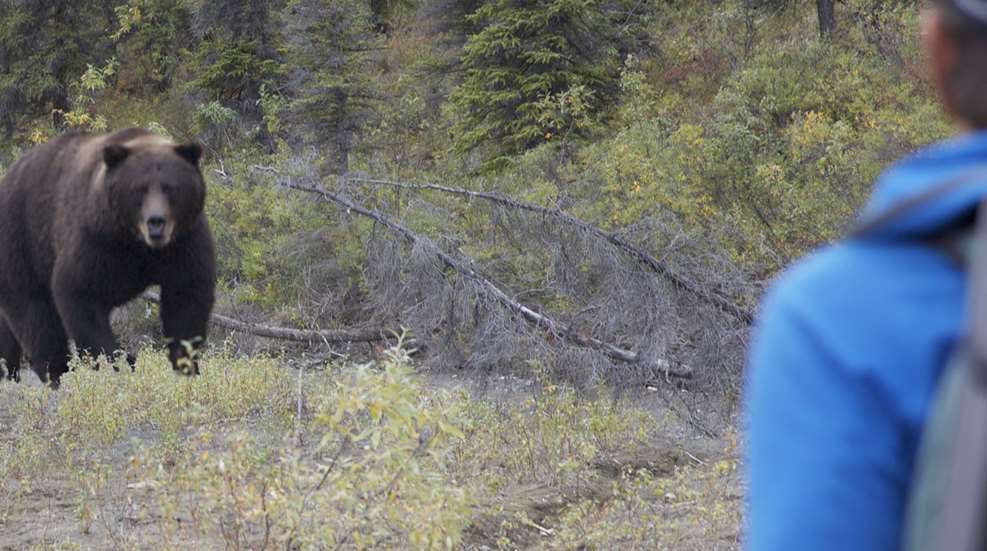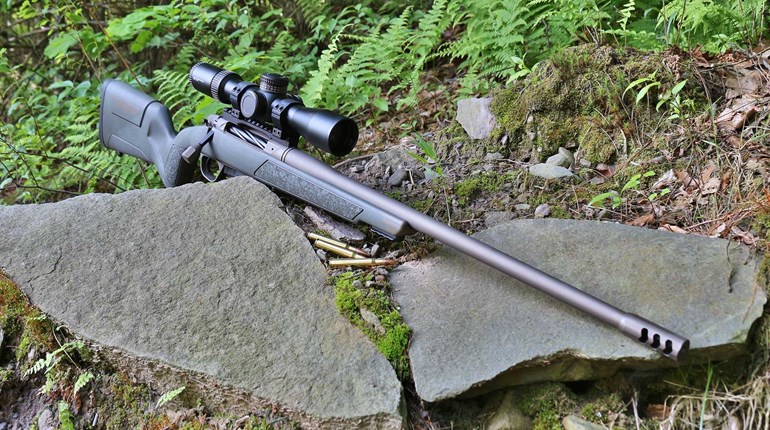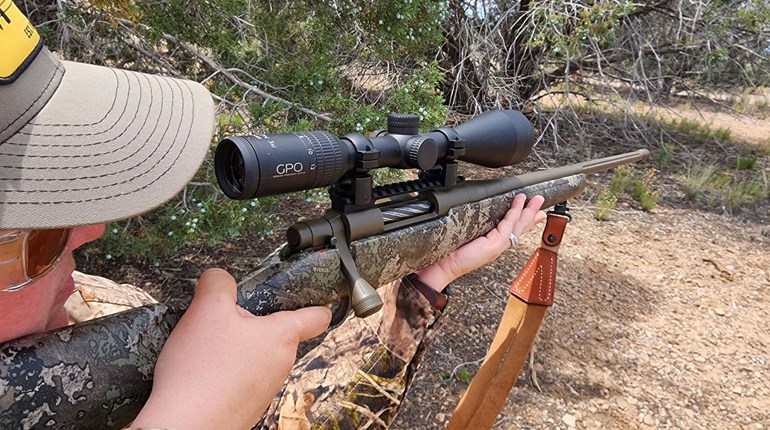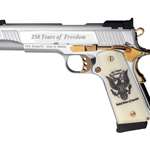
The best defense against large wildlife predators is to become educated about their habits, habitats and biology. Practicing good and sound techniques to prevent encounters with large wildlife predators can circumvent the need for more extreme measures.

Whereas other outdoor enthusiasts stay in the open and often make noise that should run off any wildlife predators, hunters face additional challenges in the backcountry. Hunters move quietly and stay hidden, allowing them to surprise an unsuspecting carnivore. Additionally, if a hunter is successful, he or she is now in possession of “predator bait!” Upon killing her game, the hunter releases the smell of blood and other odors and noises associated with a dying or dead prey, which is very attractive to a wildlife predator.

When hunting in areas where large wildlife predators exist, it is good to carry bear spray as a backup to your firearm. Bear spray works on numerous animals, not just bears. It is the best nonlethal means of deterring an attack initiated by a large predator. Chemical sprays are derived from various hot peppers, such as chili peppers, and are very effective against any animal with tear ducts. This includes black and brown bears, mountain lions and wolves. Chemical sprays are not effective against reptiles such as alligators or snakes because these types of animals do not have tear ducts.

The Environmental Protection Agency (EPA) regulates chemical sprays. Any product marked “bear spray” must be effective for deterring an attack from a brown bear. The brown bear is the standard because it is the largest of the wildlife predators; what deters this carnivore will work against the others. The EPA requires that any chemical spray marketed for large predators must be marked “bear spray” so that it is not confused with any other defensive chemical agent, like mace or pepper spray.
Mace and pepper spray used for personal protection are not effective ways to deter a large predator. While both bear spray and personal defense spray are derived from oleoresin capsicum in peppers, bear spray is required to be more highly concentrated and it will travel farther distances.

Approved bear spray should be able to spray at least 25 feet to create a safe barrier between the individual and the attacking carnivore. This distance gives the chemical spray a chance to affect the animal, before it is on top of you. The canister should hold enough chemical agent to last for 6 continuous seconds when sprayed in a shotgun cloud pattern.
The proper use of a canister of bear spray is to be deployed in two to three second bursts in the direction of the large wildlife predator. To achieve this standard, the canister should be at least 7.9 ozs, or 225 grams. Bear spray with the proper concentration of capsaicin and related capsaicinoids is effective in deterring an attack from a brown bear or other large predatory mammals by severely irritating the eyes, nose, throat and lungs of the attacking animal. The effects of the spray will not permanently incapacitate the animal and the effects will eventually wear off. However, it is critical to remember that bear spray is useless if it is not readily accessible.

The advantage of bear spray is that it is very lightweight and portable. It is essential that bear spray be kept in a proper carrying case or holster. The holster should be carried on your belt, across your chest or the hip belt of a backpack. Bear attacks almost always occur quickly and violently. It is especially necessary to keep bear spray handy in the cooking area or in a tent. Very seldom will an individual have time to dig bear spray out of a backpack when encountering an aggressive wildlife predator.
Studies have shown that in 90 percent of bear encounters, when bear spray was used, the spray deterred the attack of the bear or other large predators. In the remaining 10 percent of the attacks, the injuries were less severe to the surviving individual. However, never use bear spray as a bear preventative, such as spraying the tent or camping area to keep predators away. These chemical agents could actually attract a bear or other large wildlife predator.
The best reason for carrying bear spray as a backup to firearms is that it takes less skill to use. You might be the best shot at the range, but I bet you have never practiced shooting when a large wildlife predator is bearing down on you! Even if you do compose yourself to draw a firearm and take a shot at a charging wildlife predator, you must hit the brain to immediately stop the attack. Any other shot to a vital area may prove fatal to the wildlife predator, but not until you could face serious bodily injury yourself, or even death.
The disadvantages to using bear spray to stop an attack by a large wildlife predator are numerous, depending on environmental factors, biological factors and the aggressiveness of the animal. First, the effectiveness of bear spray is extremely dependent upon weather conditions. Windy, rainy, snowy or cold can affect the potency of the chemical agent.
Wind can blow the spray away, diffusing it before it comes into contact with the wildlife predator. Wind can also create a more dangerous situation by blowing the chemical agent back into the user’s face, rendering him or her helpless and more at risk of death from an attack. Rain can also dilute the chemical agent in the air and wash it to the ground. During extremely cold days you might have to be closer than the minimum recommendation of 25 feet to deploy the chemical. Cold days can make the bear spray heavy and fall to the ground without achieving its intended affect.
The aggressiveness of the bear can also affect bear spray’s efficacy. For example, bears defending a fresh kill or protecting their cubs are usually extremely aggressive. Often, the adrenaline rush that the bear may experience can temporarily overcome the effects of the chemical agent. There is also the fact that some bears may not be affected by the bear spray. Any law enforcement officer can attest to the fact that not everyone is affected by pepper spray, nor does everyone react the same way when sprayed.
Other disadvantages can occur through user error. The user could spray erratically or spray over the top of the predator. The user could also use too much spray in one burst, not leaving enough chemical agent for additional bursts.

There is also the problem of multiple predators. Multiple predators could attack from different directions or attack different individuals within the group. All these factors can consume the spray, creating new problems. Running out of bear spray leaves you open for repeat attacks. It can also leave the individual without any protection for the hike out to safety, making him or her vulnerable to other wildlife predators in the area.
Predators can be a real threat to individuals heading into the back country. A grizzly bear attack in Wyoming underscores the importance of taking the threat of large wildlife predators seriously. On September 14, 2018, an experienced outfitter was guiding an elk hunter on Terrace Mountain, in the heart of grizzly country.
The outfitter and client were recovering a downed elk when a sow grizzly and her two cubs attacked. The sow was approximately 500 lbs., and the two cubs were approximately 400 lbs. each. The encounter left the experienced outfitter dead, and the client injured.
Typical of bear attacks, it was extremely fast and violent. When the three bears attacked, the outfitter did not have his bear spray at hand. He left it a distance away with the horses. The outfitter then attempted to deploy a semi-automatic handgun. However, amidst the chaos, the magazine release button was accidently depressed, and the magazine fell to the ground. Unfortunately, the outfitter did not have a round in the chamber, so he was left holding an empty gun. These three accidents cost him his life.
Never underestimate wildlife predators; you’re in their world. Educate yourself. Always keep your bear spray handy, and pack a back-up firearm. You never know if this preparedness could save your life.















































